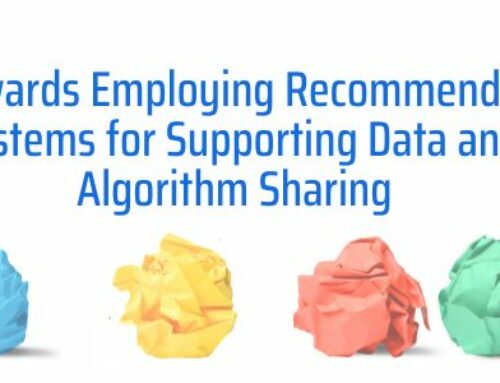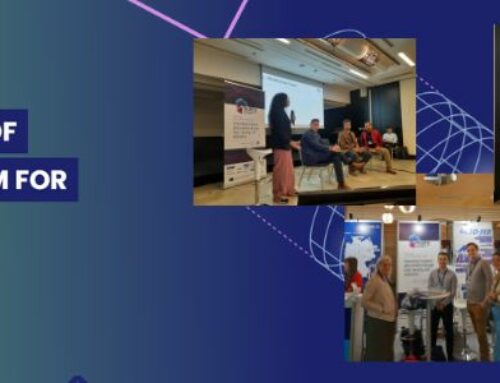
Sebastian Steinbuß, CTO, IDSA
Interview with Sebastian Steinbuß, CTO at IDSA
November 27, 2020 – A publication of this interview or contents therein can only be published providing a reference to the TRUSTS project and informing TRUSTS’ communication lead, Nina Popanton.
Dear Mr. Steinbuß, thank you very much for taking your time. Just to give our readers a short introduction: you are the CTO of the International Data Spaces Association (IDSA) and responsible for the organization of the IDSA working groups as well as the technical development of the IDS, which is a data sharing scheme including a reference architecture and a set of agreements to be used for creating and operating virtual data spaces. This makes you an experienced expert with regard to the possibilities of efficient data usage for businesses and all the challenges that come with it – which already leads to my first question:
How can companies realize a secure and efficient data exchange?
Sebastian Steinbuß: For data to be turned into new products or smart services, companies must be able to capture, store, process, evaluate, and publish data efficiently and reasonably, including a link to data from others. What prevents many companies from data sharing is a lack of infrastructures and agreements that ensure data sovereignty for both the data provider and data consumer. IDSA solved this problem: Together with politics, research and industry, IDSA designed a reference architecture for secure data spaces. The participants of such a data space decide how they use their data and with whom they exchange it. The IDS standard defines binding rules for data exchange.
How is IDS connected to TRUSTS?
Sebastian Steinbuß: TRUSTS aims at creating a European Data Market based on sovereign, secure and trustworthy data exchanges. The TRUSTS platform will act independently and as a platform federator, while investigating the legal and ethical aspects that apply on the entire data value chain, from data providers to data consumers. Still, it is no start from scratch since it will be based on the IDS reference architecture.
What makes the IDS reference architecture so valuable for the project?
Sebastian Steinbuß: The IDS Reference Architecture Model is considered the de facto standard for creating and operating data ecosystems. Its approach is to enable interoperability through semantic data descriptions, to create trust between participants through certified security capabilities, and to establish governance rules for data usage and data flows. The IDS ecosystem allows data flows between all kinds of endpoints (e.g. instantiations of the International Data Spaces Connector). Semantic data descriptions provided by data endpoints are published at dedicated Meta-Data-Brokers, allowing potential data consumers to search for and identify data that is relevant (semantics) and applicable (quality) for their particular purpose, and to assess in advance data’s affordability (price) and usability (restrictions and obligations).
What is an ‘IDS Ecosystem’?
Sebastian Steinbuß: Our key word is data sovereignty – the IDS architecture ensures data sovereignty for those who make data available in data ecosystems. This means that data owners always keep control how it is used. They decide who uses their data for how long, for which application, for how many times and according to which terms & conditions. The IDS Connector acts as a secure gateway for IoT and other data sources. Every connector can team up with other connectors to form a peer-to-peer network. As a consequence, data exchange can but does not have to take place via a cloud, in which the data would be stored with a third party provider, but directly between the companies involved. A data value chain consists of multiple peer-to-peer connections and all together sum up to a data-driven business-ecosystem
What makes IDS so special compared to similar technologies? Do any comparable technologies exist?
Sebastian Steinbuß: Participants and core components of IDS-based data ecosystems must provide a high degree of trust and security regarding the integrity, confidentiality and availability of information exchanged in the IDS. Therefore, using certified core components as well as employing certified technical and organisational security measures is mandatory for participating in the IDS. The IDS Certification Scheme defines security levels for components and the requirements to be implemented. IDS is not only a technological standard but also a universal legal framework to create data-driven business ecosystems. Key requirement to make this a reality is to have a set of rules and policies that govern it in a decentralised way. All these rules and policies are collected in the IDS Rule Book. It describes the technical, operational, and legal agreements to enable the IDS ecosystem to be fully working in a real-world scenario. The first edition of the Rule Book will be published this year.
Many thanks for the informative explanations and the illustrations – and especially for taking your time.
[END]
Further inquiries:
Nina Popanton
TRUSTS Communications Lead
Data Intelligence Offensive
+43 664 20 45 965
nina.popanton@dataintelligence.at
www.trusts-data.eu
www.dataintelligence.at




